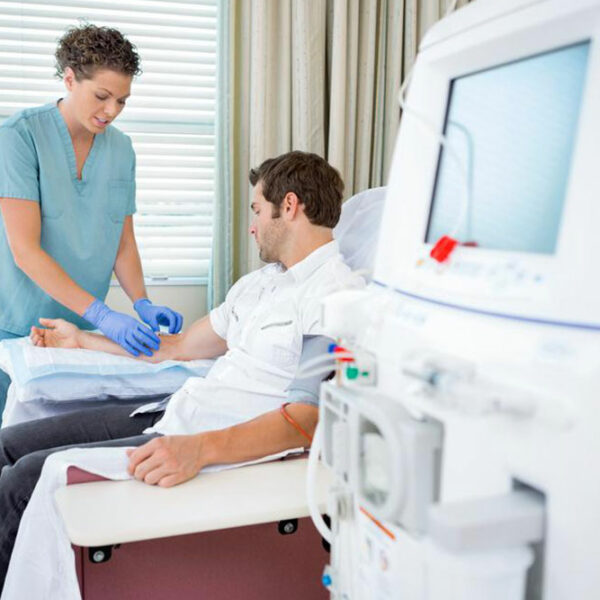5 things to know about kidney dialysis
The function of the kidneys is to remove waste material from the body, filter keeps the blood pressure under control, maintain a balance of sodium and potassium in the blood, maintain the pH balance of the body, and are responsible for the secretion of hormones that create red blood cells in the body. When one or both kidneys fail, kidney dialysis replaces some of these functions.
Kidney failure occurs in progressive stages through which one or both kidneys start losing the crucial functions.

The stages of kidney failure are categorized from stage 1 to stage 5. The first to third stages of kidney failure are labeled under mild kidney disease. Stage 5 is the worst stage of chronic kidney disease. Stage 5 is when kidney transplant or dialysis is required. Here are five important things to know about kidney dialysis:
- Kidney dialysis is required when a person loses 85 to 90% of their kidney function. This usually classifies as Stage 5 of chronic kidney disease. If a person has GFR value of less than 15, kidney dialysis will be required. GFR is glomerular filtration rate. It is measured using blood creatinine test, the person’s age, body size, and gender. The value of GFR indicates the kidney function level and the stage of the kidney disease.
- There are two types of kidney dialysis: peritoneal and hemodialysis. Hemodialysis, which is the most common, is done using an artificial kidney (a machine) that removes the waste and fluids from the blood. In this surgery is done to gain access to join an artery to a vein to make a fistula. Through a catheter, blood from the body flows into the dialysis machine; it is filtrated and then flows back into the body.
- Peritoneal kidney dialysis involves filling the peritoneal cavity in the abdomen with dialysate using a catheter. The waste and extra fluids in the peritoneal cavity are drawn out into the dialysate from the blood. The dialysate is drained back in a bag and thrown away.
- Hemodialysis is done for three to four hours, three times every week. Peritoneal dialysis requires the dialysate to stay in the peritoneal cavity for four to five hours. Both types of kidney dialysis can be done at a dialysis center as well as at home.
- One of the risk factors of being on dialysis is the development of acquired kidney cyst. Kidney cyst symptoms include fever, back pain, blood in urine, and development of cancerous tumors in the kidney. Experts suggest that kidney cyst develops more as a side effect of kidney failure or chronic kidney disease rather than as a side effect of kidney dialysis.
Disclaimer:
The content provided on our blog site traverses numerous categories, offering readers valuable and practical information. Readers can use the editorial team’s research and data to gain more insights into their topics of interest. However, they are requested not to treat the articles as conclusive. The website team cannot be held responsible for differences in data or inaccuracies found across other platforms. Please also note that the site might also miss out on various schemes and offers available that the readers may find more beneficial than the ones we cover.





